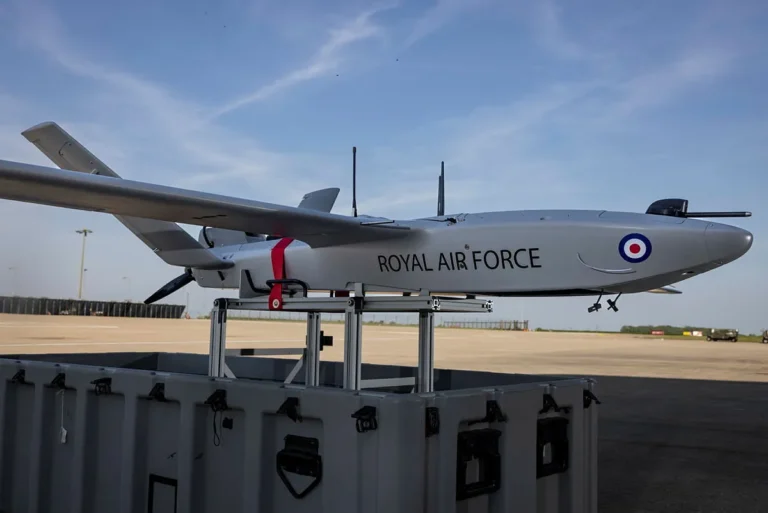Follow Us:

Share
In recent weeks, Ukraine deploys S-300V1 missiles in rare footage showcasing the formidable capabilities of the S-300V1 surface-to-air missile system in action.
This footage highlights the system’s ability to engage and neutralize aerial threats, offering a glimpse into its role in Ukraine’s defense efforts against Russian air assaults.
The S-300V1, a Soviet-era system, has been an integral part of Ukraine’s air defense capabilities since the early stages of the Russo-Ukraine conflict.
Immensely rare footage of a Ukrainian S-300V long range SAM system engaging a Russian target with a massive 9M82 missile. pic.twitter.com/UKKhsmSBGm
— OSINTtechnical (@Osinttechnical) February 9, 2025
This rare footage serves as a reminder of the significant role such missile systems play in modern warfare, particularly in a conflict involving advanced air combat and missile defense strategies.
The video released by the Ukrainian Air Force Command provides a captivating view of the S-300V1 missile system in action. The system, firing its 9M83 interceptors, demonstrates its precision and effectiveness in countering Russian aerial threats.
The footage specifically highlights the launch of 26-foot-long 9M83 missiles, designed to intercept and destroy a variety of aerial targets, including aircraft, tactical missiles, and even some ballistic missiles.

The rapid deployment and mobility of the system, owing to its tracked chassis, are evident as it engages multiple targets in quick succession, offering a dynamic portrayal of its operational capabilities. With each missile fired, the footage underscores the potency of the system in safeguarding Ukrainian airspace and protecting ground forces from aerial bombardments.
This is not the first time the S-300V1 has been deployed in the Russo-Ukraine conflict. The S-300V1, an upgraded version of the Soviet S-300 series, has been a critical asset for Ukraine’s defense forces since the early days of the conflict in 2014.
Following Russia’s annexation of Crimea, Ukraine refurbished and reactivated several Soviet-era air defense systems, including the S-300V1, which had been previously withdrawn from active service.

The decision to bring these systems back into operation was motivated by the need for advanced air defense systems to counter Russian air superiority.
The S-300V1’s reintroduction marked a significant upgrade in Ukraine’s air defense capabilities, as it provided a much-needed countermeasure to Russian missile and aerial threats.
Over the course of the conflict, the S-300V1 has been deployed in multiple instances to protect key Ukrainian military installations and civilian areas.
The system’s primary function has been to provide defense against a range of aerial threats, from low-flying tactical missiles to high-altitude cruise missiles and aircraft. The footage released by the Ukrainian Air Force represents just one of several engagements that have occurred during the conflict.
In fact, since the war’s commencement, there have been at least four instances where Ukrainian forces have showcased the S-300V1’s performance against Russian threats, further solidifying the system’s vital role in the nation’s defense strategy.
The S-300V1 is distinct from other members of the S-300 family, specifically the S-300P series, which is more commonly used for air defense. The S-300V1, on the other hand, was developed with the added capability of countering ballistic missiles.
The system’s design incorporates several key components, including a tracked transport-erector-launcher (TELAR), radar systems, and offboard radars for enhanced targeting.
The TELAR vehicles, equipped with cranes for reloading, provide the necessary mobility to set up the system near the front lines and quickly relocate as required. This mobility is a critical feature, enabling the system to adapt to the fast-moving nature of modern warfare.

One of the S-300V1’s key capabilities lies in its missile arsenal. The system is capable of firing both the 9M82 and 9M83 missiles, each designed for different types of targets.
The 9M82, also known as the ‘Giant,’ is capable of engaging strategic ballistic missiles, tactical battlefield missiles, and aircraft. With a maximum range of approximately 60 miles, it is a formidable weapon in countering long-range missile threats.

The 9M83, known as the ‘Gladiator,’ is optimized for engaging aircraft, tactical missiles, and certain types of ballistic missiles, with a maximum engagement range of 47 miles. The 9M83 missile’s speed, reaching up to 1,700 meters per second, allows it to intercept and neutralize fast-moving targets.
The mobility of the S-300V1, facilitated by its tracked chassis, enhances its survivability and operational flexibility.
The tracked launchers enable quick deployment and rapid repositioning, which is especially crucial in the context of a conflict like the Russo-Ukraine war, where air superiority and missile strikes can shift rapidly.
The system’s ability to relocate and provide continuous coverage along Ukraine’s borders and critical infrastructure adds to its effectiveness as part of the nation’s integrated air defense network.
Despite its robust capabilities, the S-300V1 is not without challenges. The global operator base for the S-300V has always been limited, and the stockpile of missiles for the system is shrinking.
The only source for new production missiles remains the original manufacturer in Russia, and with ongoing conflict and sanctions, resupply has become increasingly difficult.
As a result, the sustainability of the S-300V1’s operational capacity remains uncertain, especially as stocks of interceptors deplete over time.
Share
Defense Feeds is publication focusing on informing, engaging, and empowering the world by providing accurate information from defense technology.
Powered by Defense Feeds © 2025 – All rights reserved.